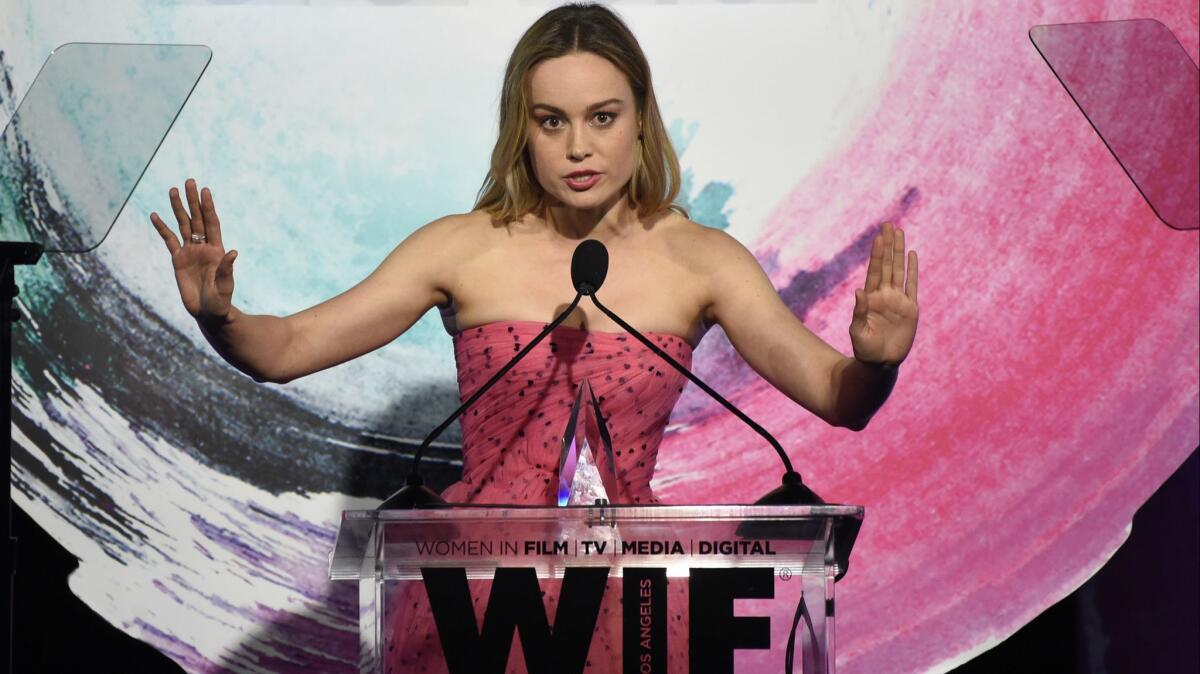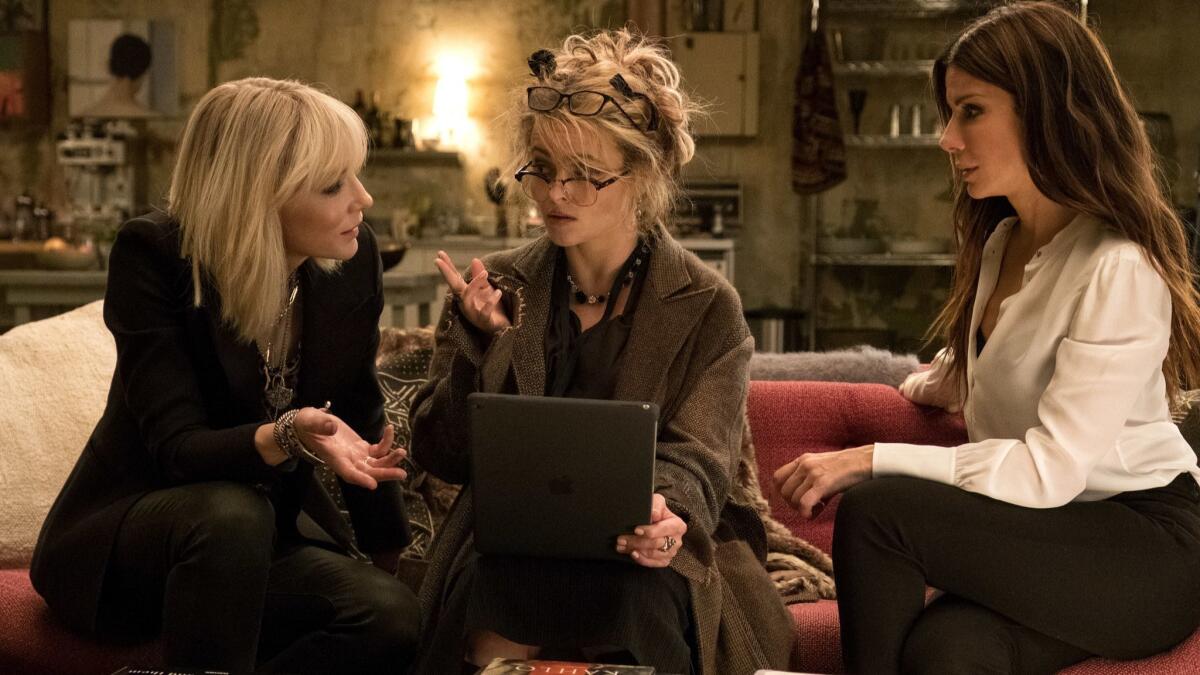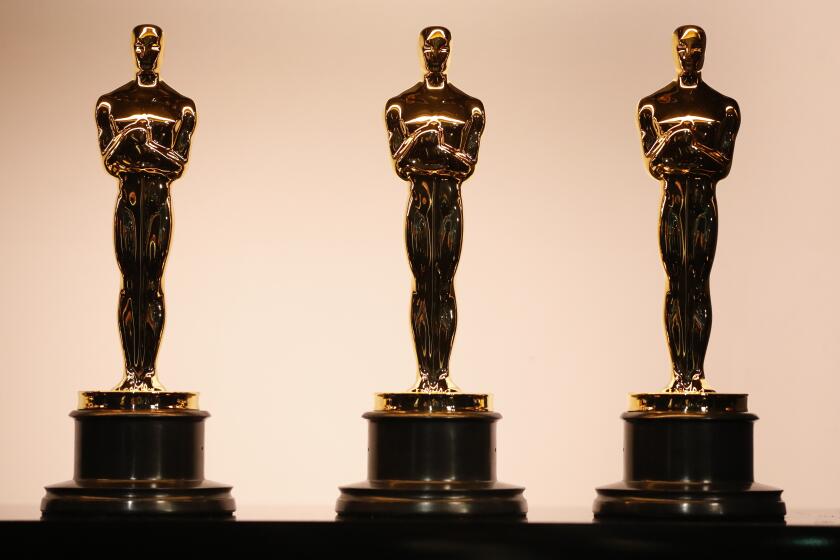We need more diversity in film criticism, but ‘Who is this movie for?’ is the wrong question to ask

- Share via
Are film critics suddenly relevant?
A hilarious online ad for the widely reviled John Travolta vehicle “Gotti” would suggest that we are, even as it insists that we aren’t. It accuses critics of having “put out the hit” on a movie that was not even screened for journalists in advance of opening, and claims that audiences love the picture, which earned under $2 million in its opening weekend. The ad’s Trumpian kicker: “Who would you trust more? Yourself or a troll behind a keyboard?”
Ouch! Given how often critics are accused of being hopelessly out of touch — with the realities of the movie industry, the habits of the moviegoing audience, the likelihood of long-term employment — I raise the question of our relevance somewhat facetiously. I also raise it reluctantly, having once vowed to write as much about the movies and as little about movie reviewing as possible. The media world is already enough of a fishbowl without me tossing in a few flakes of self-regard.
But sometimes, the subject can’t be avoided, and the story comes to you. On Wednesday night, while being honored at Women in Film’s Crystal + Lucy Awards, the actress and filmmaker Brie Larson spent several minutes speaking in passionate detail about the lack of diversity in film criticism, spurred by a recent study by the USC Annenberg Inclusion Initiative that found the field of American film criticism to be (surprise!) dominated by white men.
It’s a subject more often bandied about by journalists with itchy Twitter fingers than by members of the Hollywood elite, whose attitudes toward critics tend to run the gamut from indifference to contempt. Larson isn’t the first actor to call out the alarming gender imbalance in film criticism, as Meryl Streep did in 2015 while promoting “Suffragette,” but it’s still rare for a celebrity to address the critical community and acknowledge their role in helping a film find an audience.
Or, as Larson grudgingly put it: “It really sucks that reviews matter, but reviews matter.”
Indeed they do. As Larson alluded to in her speech, she might not have won an Oscar if her independent drama “Room” hadn’t won early praise from critics at festivals like Telluride and Toronto. Larson was an indie darling and festival veteran long before she ever dreamed of playing Captain Marvel, which made it fitting that she used her speech to break the news that the Sundance and Toronto film festivals plan to significantly boost press access for underrepresented journalists starting in 2019.
As an opportunity to improve exposure for female critics and critics of color at the two most important film festivals in North America, this initiative represents a small but useful step in the right direction. But the significance of that step was overshadowed by the rest of Larson’s speech, specifically when she brought up Ava DuVernay’s “A Wrinkle in Time” as an example of a movie that warranted a more representative critics’ pool.
Her main argument — that she wanted to hear what female critics, especially female critics of color, had to say about a movie featuring a black biracial teenage girl — is one that no reasonable person would take issue with. There are some, of course, who refuse to grasp that criticism is a gloriously subjective activity, and that personal experience can be an illuminating analytical tool. We can derive fresh, even singular insights from reading, say, what a critic of Mexican heritage thinks of “Coco,” or what a transgender critic thinks of “Tangerine,” especially when those insights emerge in concert with keen aesthetic judgment, deep cultural knowledge and an ability to write smartly and evocatively about a visual medium.
But it was Larson’s accompanying jab that drew the most applause that night and the most ire on social media the next morning: “I do not need a 40-year-old white dude to tell me what didn’t work for him about ‘A Wrinkle in Time.’ It wasn’t made for him.” In two sentences, an argument for something suddenly became an argument against something else.
“It wasn’t made for him.” Wasn’t it, though? Does the fact that “A Wrinkle in Time” was clearly made with women of color in mind nullify its ability to speak powerfully, even specifically, to the audience as a whole, 40-year-old white dudes included? Who gets to say for whom a film is made, in the end — the filmmakers? The marketing executives? What about those viewers who love a movie, whether or not they fit the target demographic? How seriously do we take the 40-year-old white dude for whom “A Wrinkle in Time” worked beautifully, versus, say, a 30-year-old black woman who found it disappointing?
Had I restricted myself to a slim diet of American cinema made for people who look like me, I doubt I could ever have fallen in love with the movies...
I ask these questions, incidentally, as a 35-year-old Chinese American dude and one of the 13.8% of “underrepresented men” who reviewed any of last year’s 100 highest-grossing films, according to the USC study and its Rotten Tomatoes-derived data. Speaking strictly for myself, I’ve never felt compelled to call attention to my ethnic background in my work — I always figured my byline was enough of a giveaway — or hold it up as a sign of any unique qualification or sensitivity on my part. I never wanted to be a good Asian American critic; I wanted to be a good critic, period.
If being a minority has informed my criticism in any way, it’s that it liberated me from any need to appreciate film through the prison — sorry, prism — of relatability. Had I restricted myself to a slim diet of American cinema made for people who look like me, I doubt I could ever have fallen in love with the movies, let alone aspired to write about them for a living.
When I did start reviewing movies professionally, I was fortunate enough to have editors who expected me to write intelligently and persuasively about a wide swath of world cinema — American movies, French movies, Argentinean movies, Indonesian movies, movies directed by men and women alike — and who never once assumed that my personal background would in any way define or limit my cinematic interests.
“Who is this movie for?” is an inherently limiting question. Years of watching and writing about movies have convinced me that it might well be the most useless question in film criticism, one that assumes a dispiriting lack of curiosity on the part of the audience.
“Who is this movie for?” promotes the commercial and cultural tyranny of the Hollywood blockbuster, strategically crafted for maximum four-quadrant appeal, and minimizes the potential of non-English-language films with the temerity to tell their own stories and move to their own narrative rhythms. “Who is this movie for?” leaves no room for an experience that every movie lover has had, of wandering into a theater and being utterly transported by a picture that looks, sounds, moves and feels like nothing she might have experienced before.
“Who is this movie for?” leads to ridiculous generalizations such as the recently Twitter-circulated claim that only men keep inflating the high reputation of Alfred Hitchcock’s “Vertigo.” The critic Jessica Ritchey offered a beautifully argued rebuttal in MEL Magazine, noting that such a stance effectively erased decades of vital scholarship on “Vertigo” from female critics and academics. (Tempting as it can be to write off men as a gender, it can be hard to do so without projecting a similarly dim view of women.)
Above all, “Who is this movie for?” rules out the possibility of sympathetic imagination, the ability to empathize with a perspective other than one’s own, as the chief impulse behind artistic depiction and appreciation. We negate the possibility of sympathetic imagination when we assume that someone’s particular affinity for a work of art will be dictated in advance by specifics of race, gender and age. It’s not that those specifics aren’t factors. It’s that some have a tendency to mistake factors for absolutes.
Obviously, this all goes a bit beyond the parameters of what Brie Larson was saying. She said, “We need to be conscious of our bias and do our part to make sure that everyone is in the room,” and amen to that. But there are many different reasons for wanting everyone in the room, and some of those reasons reveal their own biases, as well as some significant misconceptions about the purpose and practice of criticism.

Larson’s thoughts on the matter are certainly preferable to those floated in the Telegraph’s recent interview with Cate Blanchett and Sandra Bullock about their all-female heist caper, “Ocean’s 8.” In that piece, Bullock opined that “it would be nice if reviewers reflected who the film is for, like children should review children’s films, not a 60-year-old man. I guess his opinion would be kind of skewed.” Blanchett chimed in with the claim that male critics are sometimes apt to view a film “through a prism of misunderstanding.”
It’s unclear from the interview whether Blanchett and Bullock were blaming male critics for the mixed critical response to “Ocean’s 8.” If they were, I take it neither of them bothered to read the less-than-enthusiastic notices from Lindsey Bahr of the Associated Press, Manohla Dargis of the New York Times, Emily Yoshida of New York/Vulture and Stephanie Zacharek of Time. (For what it’s worth, even the more positive notices, my own included, tended to praise the movie’s female ensemble while taking issue with Gary Ross’ direction.)
Recognizing and counteracting the existence of systemic bias in criticism is one thing; suggesting it should be a stay-in-your-lane activity is quite another. And at a certain point, dismissing your critics on the basis of signifiers such as race and gender starts to read as defensiveness about the very existence of criticism, specifically negative criticism, in the first place. You didn’t like it? Well, who cares, it wasn’t made for you!
As the critic Jessica Kiang astutely noted on Twitter, a more varied, more inclusive field of critics should be “an end in itself and not the means to a different ‘type’ of criticism. … Proportionate diversity is the endgame.” We don’t need more female critics and critics of color so that movies like “A Wrinkle in Time” and “Ocean’s 8” will get kinder, more appreciative reviews, or because the nuances of those movies are beyond the comprehension of anyone who doesn’t belong to their target audience.
We need more female critics and critics of color because the diversification of any talent pool is a worthy and important end in its own right. The critical discourse on cinema will naturally be balanced, complicated and enriched in the process, but in ways that are and should be impossible to prescribe or predict.
It’s telling that in her speech, Larson kept reminding us that she doesn’t “hate white dudes” — that even in her righteous advocacy, she tried to spare the feelings of a privileged few for whom even a slight shift toward equality can feel like oppression. It cuts to one of the chief anxieties surrounding the conversation on diversity in Hollywood: that greater inclusion for minorities will necessarily mean a degree of exclusion for the majority.
Both filmmaking and entertainment journalism are ruled by fierce competition for a finite number of jobs, a situation that shows no signs of abating anytime soon. Hiring practices that cast a wider, more inclusive net will be essential in generating any significant growth in diversity, but so too will a media industry that values criticism enough to make it a more financially sustainable full-time calling.
Until, and after, that happy day arrives, I remain entirely interested in what 40-year-old white dudes have to say about “A Wrinkle in Time.” I am also madly curious about what a 50-year-old black critic thinks of Jean Renoir’s “The Rules of the Game,” what a 28-year-old Asian American critic thinks of Charles Burnett’s “Killer of Sheep” and what a 64-year-old Arab American critic makes of “Gotti.”
Being a troll behind a keyboard can and should be an equal-opportunity pursuit.
More to Read
Only good movies
Get the Indie Focus newsletter, Mark Olsen's weekly guide to the world of cinema.
You may occasionally receive promotional content from the Los Angeles Times.











